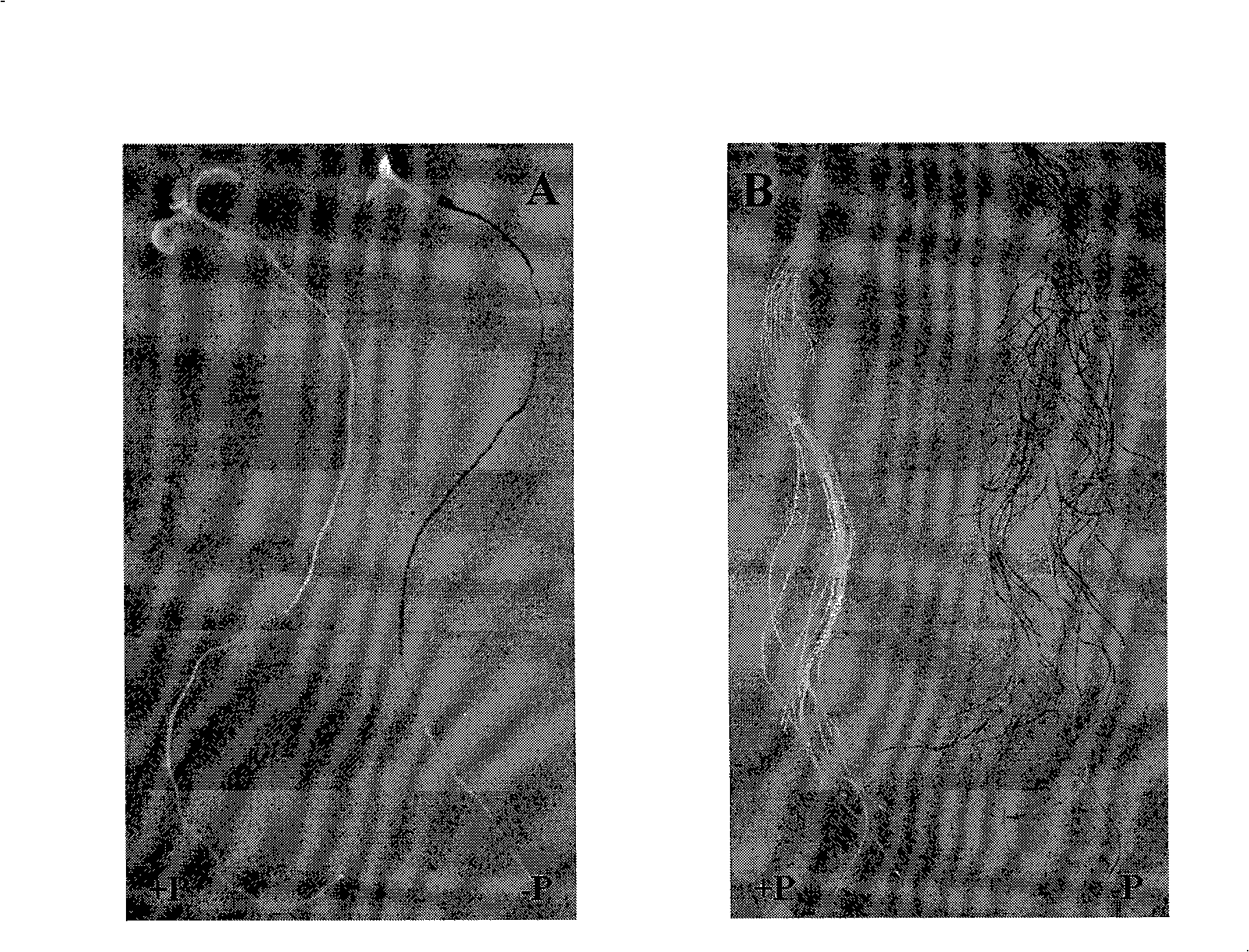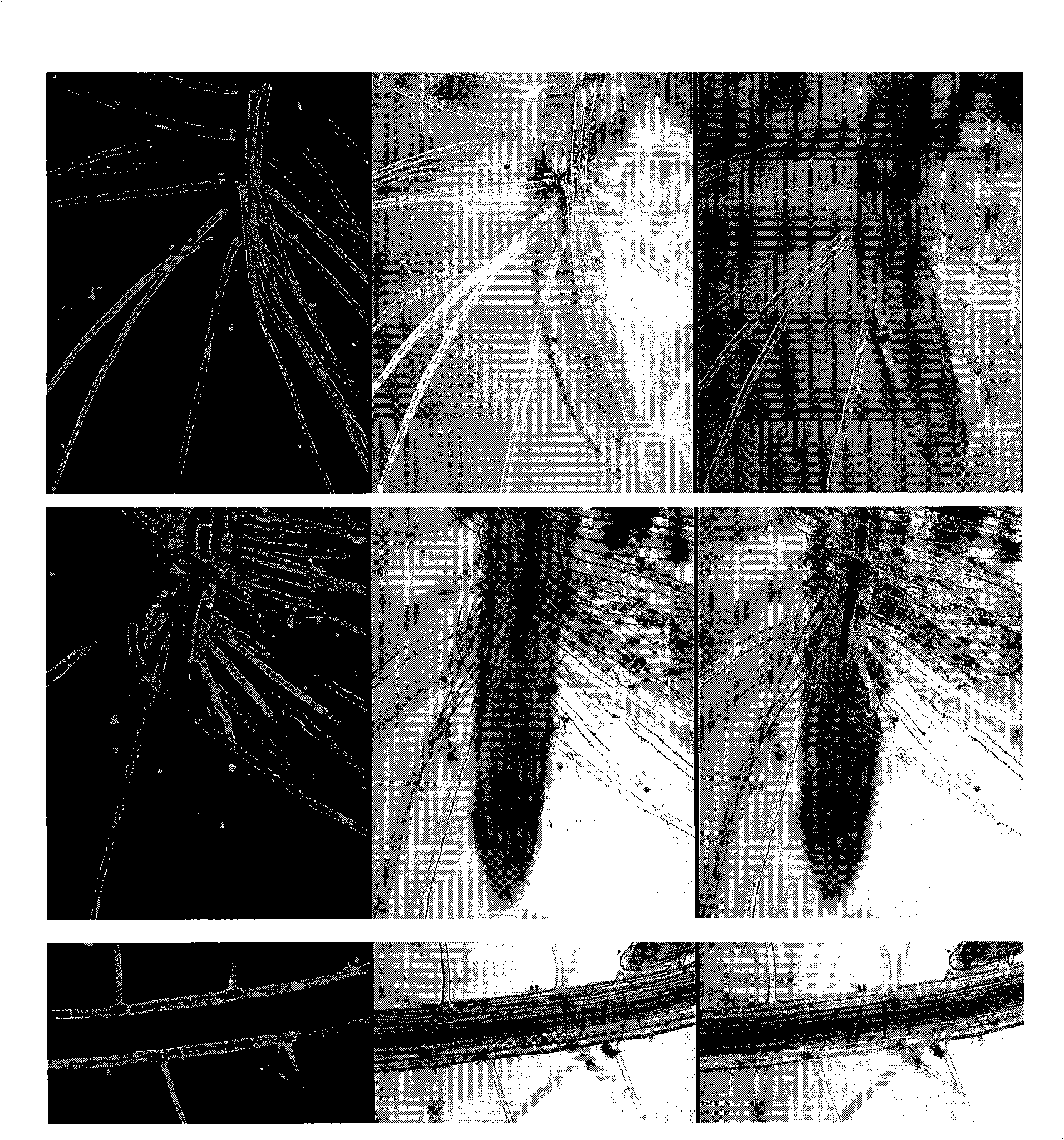Promoter for expressing phosphor deficiency speciality induction in root and use thereof
A promoter and phosphorus deficiency technology, applied in the field of promoters, can solve the problems of difficulty in meeting the needs of plant growth and development, low phosphorus, and low effective phosphorus concentration.
- Summary
- Abstract
- Description
- Claims
- Application Information
AI Technical Summary
Problems solved by technology
Method used
Image
Examples
Embodiment 1
[0022] Embodiment 1, the isolation of wheat phosphate radical transporter gene TaPHT1.2 promoter sequence
[0023] The genomic DNA of wheat variety Xiaoyan 54 was extracted, and the wheat genomic DNA was completely digested with four blunt-ended Dra I, EcoR V, Pvu II and Stu I using the Universal Kit of Clontech Company, and then digested with T 4 DNA Ligase adds adapters to both ends of the enzyme-digested fragments, and designs two 5' primers based on the sequences on the adapters, and designs two nested-PCR primers at the 3' end based on the known TaPHT1.2 gene sequence:
[0024] The linker sequence is as follows:
[0025] 5′-GTAATACGACTCACTATAGGGCACGCGTGGTCGACGGCCCGGGCTGGT-3′
[0026] 3′-H2N-CCCGACCA-PO4-5′
[0027] The 5' end primer sequence is as follows:
[0028] Adapter primer 1: 5′-GTA ATA CGA CTC ACT ATA GGG C-3′;
[0029] Adapter primer 2: 5'-ACT ATA GGG CAC GCG TGG T-3'.
[0030] The 3' end primer sequence is as follows: (gene-specific primer)
[0031] Gene-s...
Embodiment 2
[0035] Example 2, Functional Analysis of Wheat Phosphate Transporter Gene TaPHT1.2 Promoter
[0036] 1) Analysis of promoter expression characteristics
[0037] Cut out the TaPHT1.2 promoter fragment from PUC18 T-TaPHT1.2 with endonucleases Hind III and BamH I, and use these two enzymes to cut the 35S promoter part of the download vector pBI121, insert the TaPHT1.2 promoter Between the Hind III and BamH I sites of pBI121, construct the pBI121-TaPHT1.2-GUS recombinant expression vector ( figure 1 ), the constructed recombinant expression vector of pBI121-TaPHT1.2-GUS was transformed into Agrobacterium GV3101.
[0038]The EGFP (Cat. #4999-100, Clontech, Palo Alto, CA) coding region was cloned into the pJIT163 (Guerineau et al., Plant Molecular Biology, 1992, 18: 815-818) vector (Research on Genetics and Developmental Biology, Chinese Academy of Sciences Downstream of the 35S promoter, the pJIT163-GFP vector was obtained. Cut the TaPHT1.2 promoter fragment from PUC18 T-TaPHT1....
PUM
 Login to View More
Login to View More Abstract
Description
Claims
Application Information
 Login to View More
Login to View More - R&D
- Intellectual Property
- Life Sciences
- Materials
- Tech Scout
- Unparalleled Data Quality
- Higher Quality Content
- 60% Fewer Hallucinations
Browse by: Latest US Patents, China's latest patents, Technical Efficacy Thesaurus, Application Domain, Technology Topic, Popular Technical Reports.
© 2025 PatSnap. All rights reserved.Legal|Privacy policy|Modern Slavery Act Transparency Statement|Sitemap|About US| Contact US: help@patsnap.com



